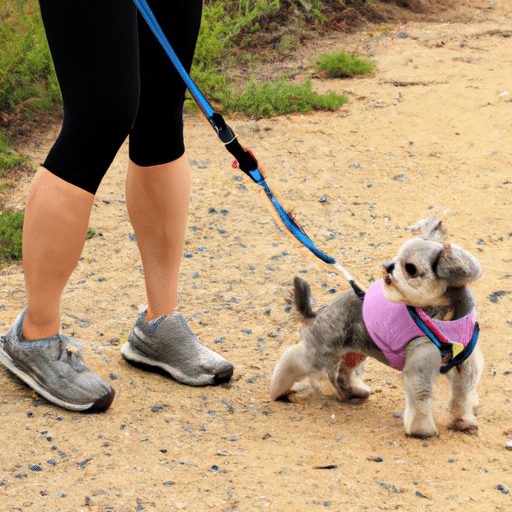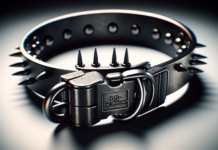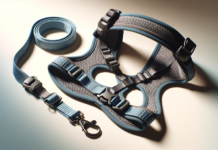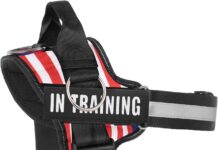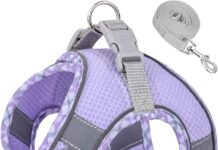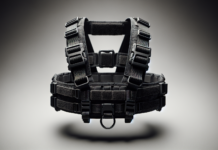Let’s talk about the wide variety of dog harnesses available out there – from adjustable to no-pull, and everything in between. Whether you have a small, excitable pup or a larger, strong-willed fur buddy, finding the right harness can make your walks together comfortable and enjoyable for both of you. In this article, we’ll explore the different types of dog harnesses, their features, and how to choose the perfect fit for your furry companion. So, get ready to discover the wonderful world of harnesses and make tail-wagging adventures a breeze!
Types of Dog Harnesses
As dog owners, we understand the importance of finding the right equipment to keep our furry friends comfortable and secure. In our search for the perfect dog harness, we’ve come across a variety of options that cater to different needs and preferences. In this comprehensive article, we will explore the various types of dog harnesses available in the market today.
Front-Clip Harnesses
Overview
Front-clip harnesses, as the name suggests, have the leash attachment located in the front of the dog’s chest. This design allows for better control and redirection of pulling behavior. The leash is attached to a D-ring or a loop located on the upper chest, giving dog owners the ability to guide their pups by turning them towards them when they begin to pull.
Advantages
One of the main advantages of a front-clip harness is its effectiveness in reducing pulling. The positioning of the leash attachment discourages dogs from lunging forward, making walks more enjoyable and manageable. They also provide owners with better control during training sessions and discourage dogs from jumping up on people.
Disadvantages
While front-clip harnesses excel in reducing pulling behavior, they may not be ideal for dogs that have a tendency to pull excessively or have a high-prey drive. Additionally, these harnesses may not be suitable for dogs who are shy or reactive, as they may feel restricted or uncomfortable with the pressure on their chest.
Best for
Front-clip harnesses are best suited for dogs that require assistance with managing their pulling behavior. They work well for dogs undergoing leash training or those who tend to lunge towards distractions during walks. They are also a good option for dogs who have a history of jumping up on people.
Back-Clip Harnesses
Overview
Back-clip harnesses are a popular and common choice for many dog owners. As the name implies, the leash attachment is located on the back of the harness, near the shoulder area. These harnesses are easy to put on and provide a secure and comfortable fit for most dogs.
Advantages
One of the biggest advantages of back-clip harnesses is their ease of use. They are typically designed to be simple to put on and take off, making them convenient for dog owners. Back-clip harnesses also distribute pressure more evenly across the dog’s body, reducing the risk of strain or discomfort.
Disadvantages
A potential disadvantage of back-clip harnesses is the limited control they provide over pulling behavior. Dogs have more freedom to pull while wearing a back-clip harness, as the leash attachment is positioned in a way that does not discourage pulling. This type of harness may not be suitable for dogs that need extra control or are prone to pulling aggressively.
Best for
Back-clip harnesses are well-suited for dogs that are well-behaved on walks and do not have a tendency to pull excessively. They are also a great option for small or toy breeds, as they provide a comfortable and secure fit without restricting their movement.
Head Collars
Overview
Head collars, also known as head halters, are unique in design and function. They wrap around the dog’s muzzle and neck, giving owners control by gently directing their dog’s head in the desired direction.
Advantages
One of the main advantages of head collars is their ability to provide immediate and effective control. By controlling the dog’s head, owners can redirect their attention and discourage pulling. Head collars also offer versatility, as they can be used for both leash training and behavior correction.
Disadvantages
Head collars may require some time for dogs to get used to. Some dogs may find them uncomfortable or restrictive initially. Proper fitting is crucial for ensuring the dog’s comfort and safety, as an ill-fitting head collar can cause discomfort or injury.
Best for
Head collars are typically beneficial for dogs with strong pulling tendencies or those who easily get distracted during walks. They can also be useful for dogs that exhibit reactive or aggressive behavior, as they provide control and prevent them from lunging or jumping.
Tightening Harnesses
Overview
Tightening harnesses, commonly referred to as martingale harnesses, are designed to tighten when the dog pulls. This mechanism provides feedback to the dog by applying slight pressure, encouraging them to reduce pulling and stay by their owner’s side.
Advantages
The tightening feature of these harnesses offers a gentle and self-correcting form of feedback to dogs. Instead of applying constant pressure, the harness tightens momentarily when the dog pulls, which can aid in training and discourage pulling behavior. These harnesses also provide a snug fit without the risk of slipping off.
Disadvantages
Although tightening harnesses can be effective in reducing pulling, they require proper fitting and monitoring to prevent discomfort or injury. Over-tightening can cause discomfort or restrict the dog’s movement, while under-tightening may fail to provide the necessary feedback.
Best for
Tightening harnesses are best suited for dogs that respond well to gentle pressure and benefit from self-correction. They are particularly useful for dogs that require consistent feedback during training sessions or those that need assistance in learning loose-leash walking.
Step-in Harnesses
Overview
Step-in harnesses are designed to be put on by having the dog step into them, making them simple and hassle-free to use. These harnesses usually have two loops for the dog’s front legs to go through, with a back strap that connects the loops.
Advantages
The main advantage of step-in harnesses is their ease of use. Dog owners can simply place the harness on the ground, have their dog step into it, and secure the back strap. This convenience is especially beneficial for dogs that are reluctant or fidgety during the harnessing process.
Disadvantages
Step-in harnesses may not provide as much control as other types of harnesses, as the leash attachment is located on the back. This positioning may lead to increased pulling behavior, especially in dogs with a strong instinct to explore or chase distractions.
Best for
Step-in harnesses are ideal for dogs that are cooperative during the harnessing process and do not require significant control during walks. They are suitable for dogs that are well-behaved on a leash and do not pull excessively.
No-Pull Harnesses
Overview
No-pull harnesses are specifically designed to address pulling behavior. These harnesses feature a front attachment point that discourages pulling by redirecting the dog’s forward momentum and promoting a focus towards the owner.
Advantages
No-pull harnesses provide dog owners with better control over pulling behavior. The front attachment point allows for gentle redirection, making walks more enjoyable and less strenuous. These harnesses are also effective in preventing neck injuries that can occur when dogs pull on traditional collars.
Disadvantages
Some dogs may require time to adjust to the sensation of wearing a no-pull harness. Additionally, dogs with a high prey drive or reactive behavior may need additional training or reinforcement for the harness to be effective.
Best for
No-pull harnesses are best suited for dogs that have a tendency to pull excessively or have a strong instinct to chase or explore. They are also a great option for dogs undergoing leash training or those who are prone to escaping from collars.
Safety Harnesses
Overview
Safety harnesses are designed with the safety and security of both the dog and the owner in mind. These harnesses typically feature additional straps or attachments that can be used to secure dogs in vehicles or during outdoor adventures.
Advantages
One of the main advantages of safety harnesses is their ability to provide peace of mind during car rides or outdoor activities. They are typically designed with durable materials and secure fastenings to ensure the dog remains safely restrained. Safety harnesses also prevent dogs from jumping out of car windows or escaping from fences during outdoor excursions.
Disadvantages
Safety harnesses may require some time and training for dogs to become accustomed to wearing them. They may also not be as lightweight or comfortable for everyday walks, as their focus is primarily on safety and security.
Best for
Safety harnesses are essential for dogs that accompany their owners on car rides or outdoor adventures. They provide a secure and reliable way to keep dogs safely restrained, minimizing the risk of accidents or escapes.
Dual Clip Harnesses
Overview
Dual clip harnesses, as the name suggests, have two leash attachments – one located on the front and one on the back. This versatility allows dog owners to choose their preferred attachment point based on their specific needs or for different phases of training.
Advantages
One of the main advantages of dual clip harnesses is their adaptability. Dog owners can switch between the front and back attachment points based on their training goals or their dog’s behavior. This flexibility allows for better control during walks and provides options for managing pulling behavior.
Disadvantages
Dual clip harnesses may not provide the same level of control as front or back-clip harnesses individually. The positioning of the attachments may cause minor tangling issues when using both leash attachments simultaneously. It is important to choose the appropriate attachment point based on the desired outcome.
Best for
Dual clip harnesses are best suited for dog owners looking for versatility in their walking or training routines. They are ideal for dogs that can benefit from both front and back attachment points, such as those in the early stages of leash training or those who require varying levels of control in different environments.
Vest Harnesses
Overview
Vest harnesses, also known as padded harnesses, feature a wider and more cushioned design compared to other types of harnesses. They typically have a front or back attachment point and focus on comfort and preventing strain on the dog’s neck and chest.
Advantages
Vest harnesses prioritize the comfort and well-being of dogs. The padded straps and wider surface area distribute pressure evenly, reducing the risk of strain or discomfort. These harnesses are also less likely to tangle or cause friction on the dog’s coat, making them suitable for dogs with longer or thicker fur.
Disadvantages
Vest harnesses may not provide the same level of control as other types of harnesses, especially if the attachment point is located on the back. The wider design may also inhibit full range of motion for dogs that require more flexibility during physical activities.
Best for
Vest harnesses are best suited for dogs that prioritize comfort and dogs with sensitive skin or coat. They are also suitable for dogs that do not have significant issues with pulling and require a hassle-free harness for everyday walks.
Pulling Harnesses
Overview
Pulling harnesses, also known as weight-pull or sled-pulling harnesses, are specifically designed for dogs engaged in pulling activities such as sled pulling or cart pulling. These harnesses are built to distribute weight evenly and to handle the strain and pressure associated with pulling tasks.
Advantages
Pulling harnesses are designed to withstand significant pressure, making them durable and reliable for pulling activities. They are padded for comfort and are typically adjustable to provide the best fit for each dog. These harnesses allow dogs to engage in pulling activities safely and with optimal efficiency.
Disadvantages
Pulling harnesses are not suitable for regular walks or everyday use, as their focus is primarily on specific pulling tasks. They may not provide the necessary control for managing pulling behavior during normal walks.
Best for
Pulling harnesses are best suited for dogs actively involved in pulling activities, such as dog sledding or cart pulling. They are designed to accommodate the specific needs and demands of these activities, ensuring the dog’s safety and comfort during performance.
In conclusion, there are a wide variety of dog harnesses available, each catering to different needs and preferences. Whether it’s reducing pulling behavior, providing control and safety during outdoor adventures, or maximizing comfort for everyday walks, there is a harness type that is best suited for every dog. By understanding the features, advantages, disadvantages, and best uses of each type, dog owners can confidently choose the right harness for their canine companions.

